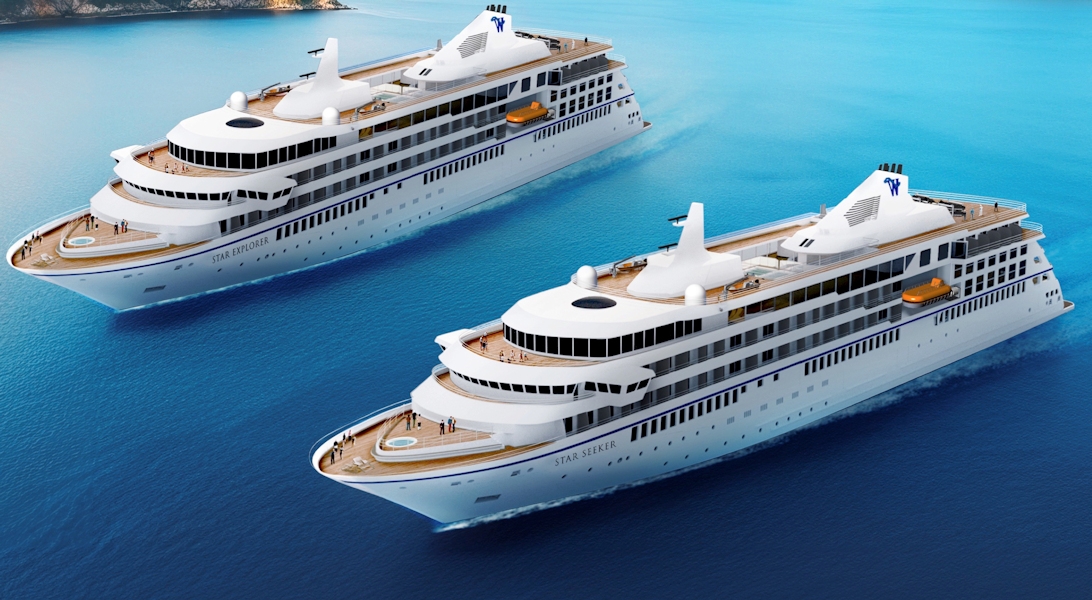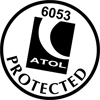| | | | | Arrive | Depart |
| 6th06 | AprApr | 202626 | San Juan (Puerto Rico), Puerto Rico, embark on the Star Seeker | | 17:00 |
If you associate Puerto Rico's capital with the colonial streets of Old San Juan, then you know only part of the picture. San Juan is a major metropolis, radiating out from the bay on the Atlantic Ocean that was discovered by Juan Ponce de León. More than a third of the island's nearly 4 million citizens proudly call themselves sanjuaneros. The city may be rooted in the past, but it has its eye on the future. Locals go about their business surrounded by colonial architecture and towering modern structures.By 1508 the explorer Juan Ponce de León had established a colony in an area now known as Caparra, southeast of present-day San Juan. He later moved the settlement north to a more hospitable peninsular location. In 1521, after he became the first colonial governor, Ponce de León switched the name of the island—which was then called San Juan Bautista in honor of St. John the Baptist—with that of the settlement of Puerto Rico ("rich port").Defended by the imposing Castillo San Felipe del Morro (El Morro) and Castillo San Cristóbal, Puerto Rico's administrative and population center remained firmly in Spain's hands until 1898, when it came under U.S. control after the Spanish-American War. Centuries of Spanish rule left an indelible imprint on the city, particularly in the walled area now known as Old San Juan. The area is filled with cobblestone streets and brightly painted, colonial-era structures, and its fortifications have been designated a UNESCO World Heritage Site.Old San Juan is a monument to the past, but most of the rest of the city is planted firmly in the 21st century and draws migrants island-wide and from farther afield to jobs in its businesses and industries. The city captivates residents and visitors alike with its vibrant lifestyle as well as its balmy beaches, pulsing nightclubs, globe-spanning restaurants, and world-class museums. Once you set foot in this city, you may never want to leave. The imposing façade of El Morro fortress is just one of the many UNESCO World Heritage Sites in San Juan. Admire the colorful colonial buildings from your casually elegant ship, docked right in the heart of Old San Juan. |
| 7th07 | AprApr | 202626 | Isla Catalana, Mexico | 08:00 | 21:00 |
| Small Isla Catalina boasts gleaming white-sand beaches ringed by coral reefs beckoning snorkelers. The island is a protected Natural Park where one beach is completely protected from the wind and the sea is delightfully calm. While beaches occupy more than 2/3 of the coastline, Isla Catalina also has unique rocky coasts and cliffs. One of the best diving sites of the Dominican Republic, Muro, can be found here. It boasts an impressive underwater wall over 328 feet deep. Isla Catalina is also the only place in the D.R. where raccoons and wild hares can be found. |
| 8th08 | AprApr | 202626 | Santo Domingo, Dominican Republic | 07:00 | 15:00 |
| Santo Domingo is the capital of the Dominican Republic and one of the Caribbean's oldest cities. Its walled, cobblestoned historic core, the Zona Colonial, has buildings that date to the 1500s, including the cathedral, which was the first built in the New World. On the cafe-lined Plaza de España is the Alcázar de Colón palace. It’s now one of the city’s many museums, displaying notable medieval and Renaissance art La Capital, as Santo Domingo is affectionately known, is a UNESCO site and one of the oldest cities in the Caribbean, with Zona Colonial buildings dating back to the 1500s. Santo Domingo is also considered the most modern metropolis in the Caribbean doing a great job of converging old and new. At the heart of the Zona Colonial, a pedestrian-friendly maze of cobblestones and interesting architecture is the first cathedral built in the New World. Find time to sample the aromatic coffee and cacao. |
| 9th09 | AprApr | 202626 | At Sea | | |
| 10th10 | AprApr | 202626 | Cartagena, Colombia | 14:30 | 23:59 |
Cartagena's magnificent city walls and fortresses, now a UNESCO World Heritage Site, enclose a well-restored historic center (the Cuidad Amurallada, or walled city) with plazas, churches, museums, and shops that have made it a lively coastal vacation spot for South Americans and others. New hotels and restaurants make the walled city a desirable place to stay, and the formerly down-at-the-heels Getsemaní neighborhood attracts those seeking a bohemian buzz. The historic center is a small section of Cartagena; many hotels are in the Bocagrande district, an elongated peninsula where high-rise hotels overlook a long, gray-sand beach.When it was founded in 1533 by Spanish conquistador Pedro de Heredia, Cartagena was the only port on the South American mainland. Gold and silver looted from indigenous peoples passed through here en route to Spain and attracted pirates, including Sir Francis Drake, who in 1586 torched 200 buildings. Cartagena's walls protected the city's riches as well as the New World's most important African slave market. Welcome to the sparkling city of Cartagena, where the gold and jewels of the Spanish Main awaited shipment across the Atlantic. No pirate could resist, nor will you be able to when you visit this historic city. The Old Town, a UNESCO World Heritage Site, is surrounded by 400-year-old walls and contains a plethora of churches, fortresses, and restored colonial mansions. Outside the walls are more treasures: Climb the massive Castillo de San Felipe to investigate its maze of hidden tunnels, or shop for the perfect emerald. |
| 11th11 | AprApr | 202626 | Cartagena, Colombia | | 13:30 |
Cartagena's magnificent city walls and fortresses, now a UNESCO World Heritage Site, enclose a well-restored historic center (the Cuidad Amurallada, or walled city) with plazas, churches, museums, and shops that have made it a lively coastal vacation spot for South Americans and others. New hotels and restaurants make the walled city a desirable place to stay, and the formerly down-at-the-heels Getsemaní neighborhood attracts those seeking a bohemian buzz. The historic center is a small section of Cartagena; many hotels are in the Bocagrande district, an elongated peninsula where high-rise hotels overlook a long, gray-sand beach.When it was founded in 1533 by Spanish conquistador Pedro de Heredia, Cartagena was the only port on the South American mainland. Gold and silver looted from indigenous peoples passed through here en route to Spain and attracted pirates, including Sir Francis Drake, who in 1586 torched 200 buildings. Cartagena's walls protected the city's riches as well as the New World's most important African slave market. Welcome to the sparkling city of Cartagena, where the gold and jewels of the Spanish Main awaited shipment across the Atlantic. No pirate could resist, nor will you be able to when you visit this historic city. The Old Town, a UNESCO World Heritage Site, is surrounded by 400-year-old walls and contains a plethora of churches, fortresses, and restored colonial mansions. Outside the walls are more treasures: Climb the massive Castillo de San Felipe to investigate its maze of hidden tunnels, or shop for the perfect emerald. |
| 12th12 | AprApr | 202626 | San Blas Islands, Panama | 08:00 | 17:00 |
The San Blas archipelago is located off the Caribbean coast, east of Colon, and is made up of 365 islands that range in size from tiny ones with a few coconut palms to islands on which hundreds of Kuna Indians live. Only about fifty are inhabited. The Kuna rule the San Blas Territory with internal autonomy, and have tightly preserved their language and cultural traditions over the centuries despite influences from European colonies. In addition to their own language, Spanish is widely spoken and many men work on the mainland, but live on the islands. Women wear costumes with unique designs based on local themes, geometric patterns, and stylised fauna and flora. The island of El Porvenir is one of the main seats of government for the Kuna Indians. Many Kunas from the other islands came to settle on El Porvenir, bringing with them their traditional arts and crafts, including the famous molas. These intricately hand-sewn designs are made by the women of the tribes as part of their blouses and dresses. With the increased tourism, molas are now a favoured souvenir and craft item for visitors. The San Blas Islands of Panama is an archipelago comprising approximately 378 islands and cays, of which 49 are inhabited, some by the Kuna people. Scattered over an area of about 100 square miles, the islands are the number 1 vacation destination in Panama although the Kuna work hard to protect their land against overwhelming tourism and keep the islands healthy and lovely, unique and untouched by culture. These white-sand and palm tree lined islands are encompassed by a coral reef and warm, crystal-clear water that is perfect for snorkeling and is home to a variety of marine life including dolphins, sharks and giant manta rays. |
| 13th13 | AprApr | 202626 | Colón, Panama, disembark the Star Seeker | 07:00 | |
The provincial capital of Colón, beside the canal's Atlantic entrance, is named for the Spanish-language surname of Christopher Columbus, though the Americans called it Aspinwall in the 19th century.. The city was founded in 1850 by Americans working on the Panama railroad and named Aspinwall for one of the railway engineers. Following completion in 1855, Colon gained in importance, which was furthered by the plans for an isthmian canal. During the time of the French canal attempt, a fire in 1885 burned the city nearly to the ground and left thousands of people homeless. Colon was rebuilt in the architectural style then popular in France. Buildings from that era plus the ones constructed by Americans between 1904 and 1914 are still in use today, although the majority is on the verge of collapse. In addition to its importance as a port, Colon boasts the world’s second largest duty-free zone, known as Zona Libre, which is contained in a huge fortress like, walled-off area with giant international stores. However, most of the merchandise is sold in bulk to commercial businesses throughout the country. Explore the inner workings of the Panama Canal, head into the jungle to meet with Embera Indians, or take an aerial tram ride through the rainforest canopy. |

